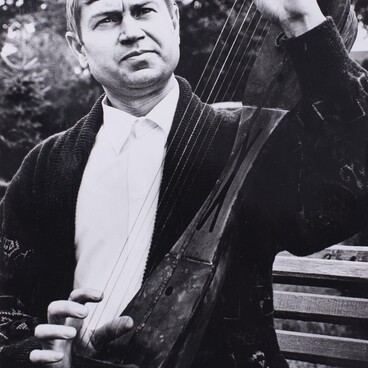According to the passport of this piano, it was produced by the Hoepfner firm founded in 1880. The brand belonged to August Jaschinsky who was known among piano makers as “Pappel-August”.
August Jaschinsky received this nickname because he used only German poplar wood (Pappel) as ground veneer for his instruments. The sound boards of Jaschinsky’s pianos were made exclusively of mahogany purchased in California, USA. This wood absorbs the varnish better than others, which significantly improves the quality of sound.
Hoepfner produced not only traditional instruments but also desk pianos, wardrobe pianos, and other instruments similar to pieces of furniture in both their appearance and function.
The idea to introduce such unique designs was fueled by the competition between numerous piano manufacturers. At the beginning of the 19thcentury, unusual designs were popular. Later, they fell out of use, unable to compete against traditional models.
In the 1920s and 1930s, there was a revival of interest in such cross-functional pieces of interior design. In constrained areas, such as a small room or a ship cabin, such a design solution was sometimes the only option for fitting in all the necessary furnishings.
When closed, the piano served as a desk, equipped with two small cabinets under the tabletop for storing papers, writing utensils, and books. If necessary, the desk was easily transformed into an under-damped piano with 85 keys. Such an instrument was not only compact but also had a very nice sound.
The instrument’s body was coated with spirit varnish, and the fallboard was equipped with an elegant internal lock. Such instruments were widely used until the mid-20thcentury, both in Russia and other countries, especially in the USA.
Jaschinsky’s firm was not the only manufacturer of
desk pianos. For example, in the first half of the 19thcentury,
such instruments were produced at the St. Petersburg Piano Factory of Friedrich
Diederichs which also manufactured Viennese grand pianos. By the end of the
century, this model was removed from production as an obsolete design.




